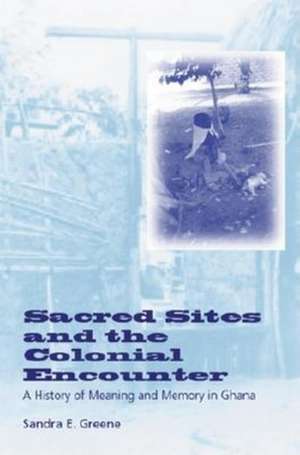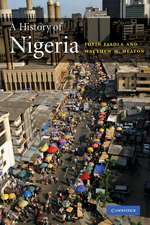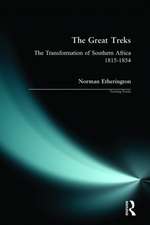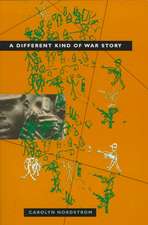Sacred Sites and the Colonial Encounter – A History of Meaning and Memory in Ghana
Autor Sandra E. Greeneen Limba Engleză Paperback – 13 mai 2002
Preț: 191.90 lei
Nou
Puncte Express: 288
Preț estimativ în valută:
36.73€ • 38.59$ • 30.87£
36.73€ • 38.59$ • 30.87£
Carte tipărită la comandă
Livrare economică 12-26 martie
Preluare comenzi: 021 569.72.76
Specificații
ISBN-13: 9780253215178
ISBN-10: 025321517X
Pagini: 224
Ilustrații: 25 b&w photographs
Dimensiuni: 177 x 232 x 14 mm
Greutate: 0.35 kg
Ediția:New.
Editura: MH – Indiana University Press
ISBN-10: 025321517X
Pagini: 224
Ilustrații: 25 b&w photographs
Dimensiuni: 177 x 232 x 14 mm
Greutate: 0.35 kg
Ediția:New.
Editura: MH – Indiana University Press
Cuprins
Preliminary Table of Contents:
Preface and Acknowledgments
A Note on Ewe Orthography
A History Outlined
Introduction
1. Notsie Narratives
2. Of Water and Spirits
3. Placing and Spacing the Dead
4. Belief and the Body
5. Contested Terrain
Conclusion
Notes
Bibliography
Index
Recenzii
"This is a fascinating work that analyzes the colonial encounter through a nuanced examination of the realm of cognition and belief." --Emmanuel Akyeampong"Greene's work is an original, wide-ranging, and engaging scholarly contribution to the literature on colonialism and religious change in sub-Saharan Africa. . . . Greene sheds light on the process of cultural interaction in a way which does not diminish African capacity and resiliency while acknowledging the power of Europeans to shape local discourse." --John H. Hanson"This is a fascinating work that analyzes the colonial encounter through a nuanced examination of the realm of cognition and belief. . . . Greene gives the reader a vivid sense of the Anlo encounter with western thought and Christian beliefs . . . and the resulting erasures, transferences, adaptations, and alterations in their perceptions of place, space, and the body." Emmanuel Akyeampong"Greene's work is an original, wide-ranging, and engaging scholarly contribution to the literature on colonialism and religious change in sub-Saharan Africa. . . . Greene sheds light on the process of cultural interaction in a way which does not diminish African capacity and resiliency while acknowledging the power of Europeans to shape local discourse." John H. Hanson" . . . a remarkable piece of work."--James Gibbs, Univesity of the West of England in theLEEDS AFRICAN STUDIES BULLETIN, No. 65, 2003________
Descriere
How the colonial encounter reshaped landscapes of spiritual meaning and memory in Ghana




















